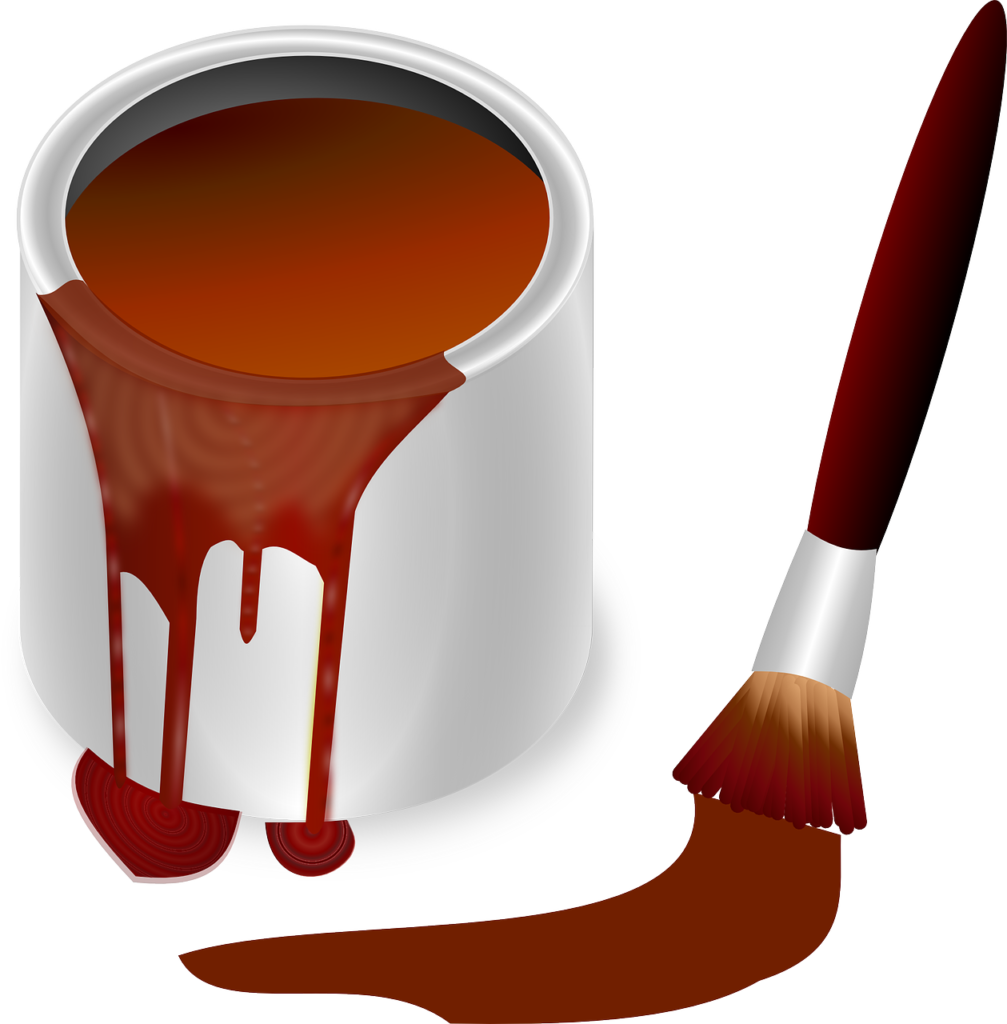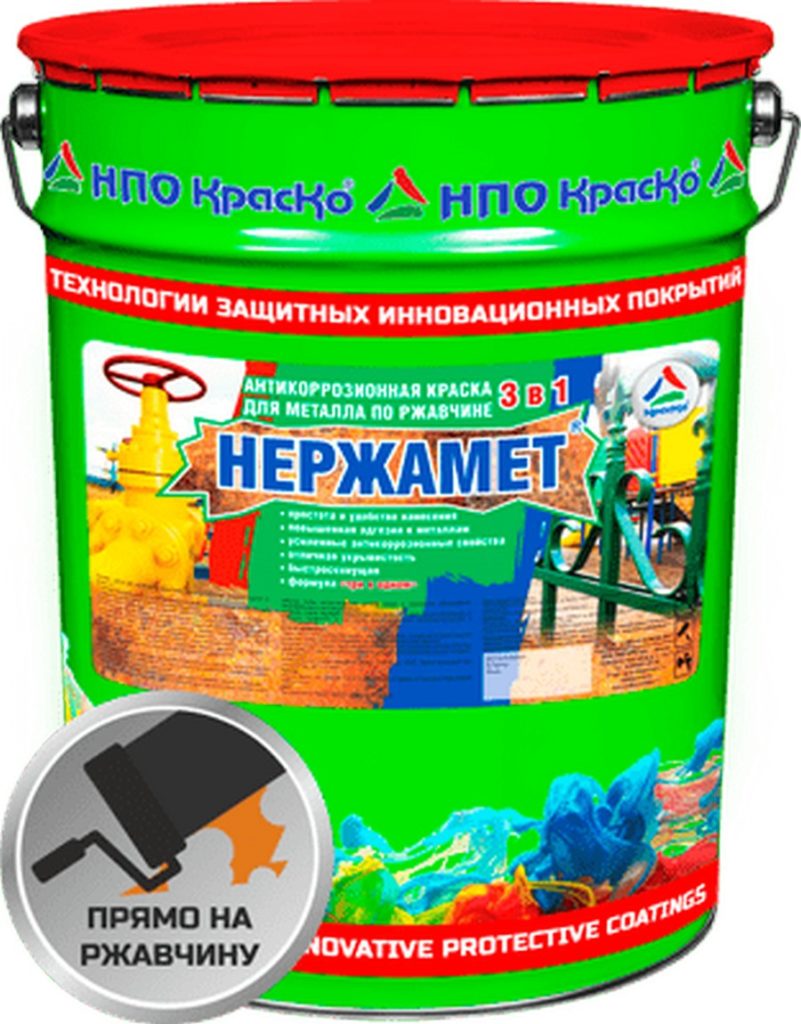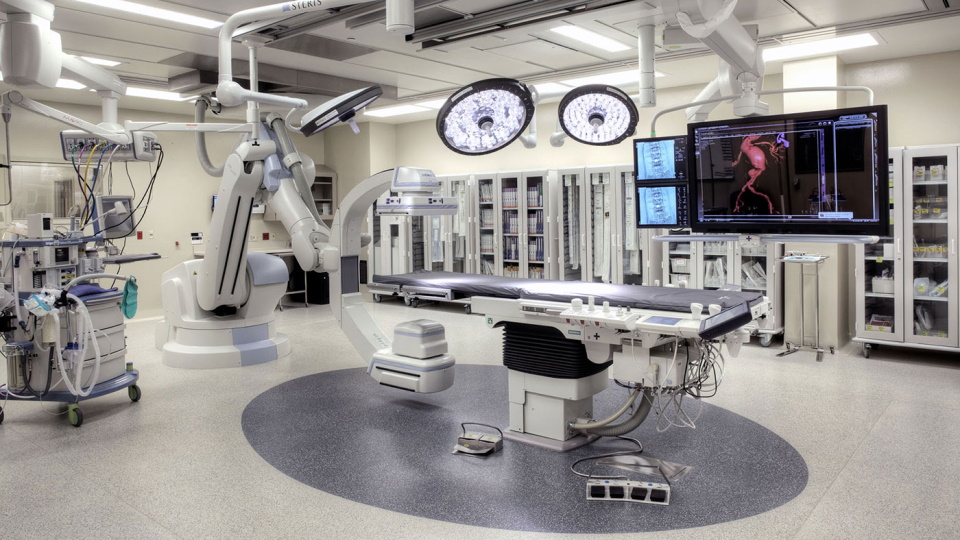Rating of the best bathroom paints for 2024

You can paint the walls in the bathroom in different ways. Some people prefer a combined option, in which part of the wall near the bath or shower is tiled, and the rest of the space is painted. Others prefer to paint over the entire bathroom. And in this case, the question immediately arises: is any paint capable of withstanding high humidity and splashing water for a long time? Moreover, the water in the domestic water supply system, as a rule, is chlorinated, and this chemical can negatively affect the paintwork. Of course, you can resort to everyday tricks and, after applying paint, cover the painted areas with sheet transparent polycarbonate. But this will mean additional costs, both financial and temporary. Thus, it is better to choose a specialized paint that is not afraid of close contact with water.
Existing types of bathroom paints
The main properties that bathroom paint should have are its excellent protective qualities, quick drying process, absence of unpleasant odors and excellent hygienic characteristics.
The following types of paints and varnishes can meet the above requirements:
- Water based emulsions;
- Latex paints;
- Compositions containing acrylic ingredients;
- Various silicones;
- Derivatives from rubber;
- Alkyd composites.
At one time (20-30 years ago), oil paints were used to decorate rooms with high humidity, however, today they are no longer relevant. This is due to the fact that in many respects they are inferior to modern compositions (and specifically, in terms of moisture resistance).

Water based emulsions
When choosing such paints, first of all, you should pay attention to their technical properties. They can be conditionally subdivided according to the components underlying them. In particular, water emulsions are very popular and have improved characteristics, which have a pigment in their composition that binds particles of solid matter and water. The very same range of water-based paints is wide enough and allows you to bring to life any exclusive design solutions. These paint products are absolutely harmless, have a long service life, and can form both glossy and matte coatings.
But here, too, there are some nuances: the wall surface located directly above the bathroom bowl should be painted using a glossy base - such paintwork materials have more pronounced water-repellent characteristics.
If in the future you still have to carry out a general cleaning of the painted layer, then for this you should use simple textile rags - any stains will be cleaned with ease. And even if the stain does not want to be removed, then it can simply be painted over with a second layer - water emulsions allow it.
Latex based paints
Paintwork materials containing natural latex belong to the elite group of paints, because they are based on the technology of production of natural rubber from exotic juices. These paintwork materials "work" as follows: in the course of applying a thin layer to the surface, the components are polymerized, which, as a result, leads to the formation of a thin and elastic film with powerful water-repellent qualities. However, in order for such an elastic coating to be durable and continuous, before starting painting, a thorough treatment of the wall surface is required, that is, any roughness must be removed, and the primer must be evenly and efficiently distributed.
IMPORTANT! It should be remembered that under the continuous latex coating, the surface practically does not breathe, therefore, under it fungi and mold can form. Thus, after preparing and leveling the surface, it must be treated with a special disinfectant that will prevent the possibility of biological contamination of the wall.
The undoubted advantages of latexes include their resistance to mechanical abrasion, long natural wear and tear, easy cleaning from external dirt, easy application and high solvent evaporation rate. In addition, by introducing special pigments into the solution, the paint can acquire any desired color. From this it can be seen that the operational characteristics of the described material fully justify the monetary costs of purchasing these funds.
IMPORTANT! It should be noted that latexes should be used only in rooms in which a sufficient positive temperature will be maintained throughout the entire period of operation. If the temperature drops below +10 degrees Celsius, then such paint may not justify its durability and strength.
Most professional decorators prefer latex painted walls for their pleasing appearance, which creates a so-called "silky effect". A similar effect cannot be achieved with any other composition.

LKM with acrylic component
These agents, which contain acrylates, are synthetic polymers in an organic solvent. They have a slight odor that does not create discomfort. After applying the solution to the wall, the liquid dries quickly and does not leave unpleasant odors behind. This coating perfectly permeates air, is extremely resistant to interaction with moisture, perfectly withstands almost any temperature.
Surfaces on which acrylic paint can be easily fixed:
- Natural stone;
- Concrete and brick;
- Plastic;
- Any kind of metal;
- Glass.
The acrylates themselves are capable of creating an outwardly beautiful and decorative effect with a deep, bright color. As a rule, acrylic paints and varnishes contain anti-fungal additives.
IMPORTANT! Like any synthetic, acrylic is extremely susceptible to surface roughness, because they can cause a breakthrough in the paint layer. Therefore, before painting the bathroom, you should perform a high-quality primer on the walls.
Currently, acrylic is the most suitable material in terms of price / quality ratio, both for decorating bathrooms in a standard apartment, and for use in baths, large kitchens, laundries and other rooms with high humidity.
Silicone paints
They are often incorrectly referred to as aqueous emulsions due to the fact that their structure includes particles of polymer compounds in an aqueous medium. Their main positive characteristic is that they are unpretentious to an untreated surface and fit perfectly even on rough walls. In addition, they adhere well to various substrates: wood and plastic, concrete and metal, natural and artificial stone. Among other things, silicones are breathable and can easily withstand almost any temperature.
By themselves, paintwork materials-silicones are capable of withstanding an operational life of at least 25 years, while not requiring any repainting. At the same time, their structure often contains ingredients that successfully fight mold and mildew. This kind of paint is preferred by designers working in the "high-tech" style.
IMPORTANT! Although silicones interact quite well with metal substrates, it will not be superfluous to treat the metal with an anti-corrosion agent before painting them. The thing is that water vapor can penetrate through the microscopic pores in silicone, which will subsequently cause rust.
Rubber paints
These materials can demonstrate excellent waterproof properties over a long period due to the fact that artificial polymers are present in their structure. The elasticity that this ingredient gives also allows this material to be unpretentious to the unevenness of the bathroom walls. Moreover, with this paint, you can even cover up and smooth out roughness. There are few nuances in their application: you just need to carefully remove the layer of the previous paint (if any), and after that apply the rubber paint in several layers - this will increase the quality of the protective film. However, although the rubber material is considered harmless, it is NOT RECOMMENDED to cover some types of objects with which a person interacts (for example, dishes, tanks with drinking water, etc.)!

Alkyd enamel products
These products belong to the category of quick-drying, since the white spirit present in them evaporates extremely quickly. Alkyd resin-based paints are intended for interior and exterior surfaces, including bathroom walls. The products are classified as quick-drying paints, because the white spirit solvent evaporates very quickly. They can also include various mineral supplements, antimicrobial agents, certain types of pigments. Walls painted with alkyds will hold up well in high humidity conditions, will not crack or peel off. In addition, they withstand temperature differences well. Among modern designers, paint has received well-deserved respect for the fact that it is available both in liquid form and in the form of aerosols. And the latter are very convenient to use when you need to paint over hard-to-reach places.
The disadvantages of alkyds can be called their high toxicity to the human body, therefore staining must be carried out exclusively in a respirator. Upon completion of the repair, you should ventilate the room for a long time or arrange good ventilation in the bathroom.
Oil paints
This solution is the most famous and most used. It is based on pigments dissolved in oil or varnish. The composition has a very low price, it fits perfectly on walls, metal and wooden structures. A clear drawback here is the general fragility of the coating, its tendency to peeling and cracking, which is caused by prolonged contact with water or moisture vapor. It is possible to use such paint in the modern world only if there is an obvious lack of funds or in industrial premises.
Some disadvantages of modern paints and varnishes
Oil or alkyd compositions certainly have better adhesion (adhesion to the surface) in comparison with others, but after their application, long-term ventilation of the room is required.At the same time, water-based paints are odorless, dry quickly and can be washed and repainted several times. However, surfaces treated with such materials should be constantly wiped dry to avoid condensation water. When dry, it can partially wash off the coating itself.
Professional finishers recommend: do not use the same paint over the entire area to paint a bathroom. For the best combination, it is preferable to paint the top of the walls with a water emulsion, and use rubber, silicones or acrylics at the bottom.
Preparation for painting
Before painting, the surface of the walls must be properly prepared - it must not have roughness, otherwise blotches of enhanced color or streaks may appear on the painted walls. The best option would be to carry out preliminary plaster, primer and putty. In order to determine evenness, you can use a beacon suspended by a string at the extreme corner of the ceiling and wall. It should hang loosely but flush against the wall to detect gaps. In principle, the surface cannot be perfectly flat, but a deviation of no more than 0.1 cm is considered acceptable.

Highlights when choosing paintwork
Before buying, you should familiarize yourself with the qualities of a particular paint and decide on its compliance with the necessary parameters. Most of the information about paintwork materials is directly indicated by the manufacturer in the instructions for use (it can be supplied as a separate booklet or applied to a container with paint). Thus, it is necessary to obtain information about:
- Drying speed;
- The elasticity of the future coating;
- Moisture resistance;
- Approximate service life;
- Features of the painting process;
- Requirements for the evenness of the walls;
- The presence of additional ingredients (anti-fungal elements, special coloring pigments);
- Toxicity of the agent, danger to humans;
- Price and volume of packing.
Rating of the best bathroom paints for 2024
Latex
2nd place: Dulux Acryl Matt
An economical latex-based paint sample with improved environmental friendliness. The standard delivery has a bright white color, which can be diluted with colored pigments. It is intended for painting interiors of premises with high humidity. Has a deep matte gloss level.

| Name | Index |
|---|---|
| Manufacturer country | Greece |
| Packing in liters | 2.25 |
| Base | Latex |
| Price, rubles | 990 |
- Increased packing size;
- Affordable price;
- Color variability is achieved by adding impurities.
- Extremely short durability.
1st place: BELINKA LATEX B3
This dye mixture has a transparent initial base, which means the variability of the selection of colors and the application of the mixture in a second layer. Has very good washable properties. It is positioned as a high-strength interior paint for rooms with constant humidity. The gloss level is matte.

| Name | Index |
|---|---|
| Manufacturer country | Slovenia |
| Packing in liters | 1.9 |
| Base | Latex |
| Price, rubles | 1280 |
- Excellent washable base;
- Increased safety margin;
- Environmental friendliness;
- Paint only for tinting.
Acrylate
2nd place: Z19 WATERPROOF superwhite
This paintwork material has high strength and versatility - it is equally good for painting both dry rooms and bathrooms with high humidity. Separately, it is worth mentioning its high vapor permeability and excellent hiding power. Excellent resistance to condensation. For decorative purposes, by adding pigments, the paint can take on the desired color.

| Name | Index |
|---|---|
| Manufacturer country | Russia |
| Packing in liters | 14 |
| Base | Acrylates |
| Price, rubles | 1700 |
- Multifunctionality;
- Environmental friendliness;
- Easy application process.
- Large-sized packing.
1st place: Pufas Gold Star 2
Another example of versatility - suitable for all types of premises.It has earned particular popularity among consumers due to the low consumption of the mixture per square meter. Can be applied in two layers. Designed for walls and ceilings. You can paint using different tools: from a roller to a brush and a spray gun.

| Name | Index |
|---|---|
| Manufacturer country | Germany |
| Packing in liters | 16 |
| Base | Acrylates |
| Price, rubles | 3300 |
- Low consumption per square meter;
- Multifunctionality;
- Has a deep matte gloss.
- Again, only a large package.
Silicone
2nd place: Goodhim SILICONE
This siliconized sample is intended for painting mineral and absorbent surfaces. It is often used as a finishing material. It copes well with high humidity, tolerates temperature extremes well. It has a long service life, does not crack or soften over time. Has an increased degree of adhesion.

| Name | Index |
|---|---|
| Manufacturer country | Russia |
| Packing in liters | 7 |
| Base | Silicone |
| Price, rubles | 1300 |
- Decent price / quality ratio;
- Excellent adhesion to various materials;
- Ability to tolerate temperature fluctuations.
- Not identified (for its segment).
1st place: Caparol Capasilan
High quality interior material based on silicone resins. It is characterized by ease of application, does not leave streaks. The composition does not use solvents, therefore it is immediately ready for use. Gloss degree - mineral matte. Possesses good adhesion.

| Name | Index |
|---|---|
| Manufacturer country | Germany |
| Packing in liters | 5 |
| Base | Silicone |
| Price, rubles | 2900 |
- Application occurs without streaks;
- Adheres well to various materials;
- It can be used as a repair coating for plaster.
- Dries up for a long time.
Alkyd
2nd place: Hammerite smooth
This paint is specially designed for finishing metal surfaces in bathrooms. Can be applied directly to rust layers. It goes on sale in several colors at once: from white and black to yellow and red. It has improved anti-corrosion properties.

| Name | Index |
|---|---|
| Manufacturer country | Germany |
| Packing in liters | 0.5 |
| Base | Alcides |
| Price, rubles | 730 |
- A very budget option;
- Possibility of applying to areas with rust;
- Increased heat resistance (up to +80 degrees Celsius).
- Small packaging volume (0.5 liters).
1st place: Stainless steel RAL 1028
The composition uses a modern "3 in 1" formula, when at the very first application, the active ingredients remove rust, at the same time forming a stable protective layer and applying wear-resistant enamel. It successfully resists the effects of ultraviolet radiation and high humidity. As a result, an even semi-gloss protective film is formed.

| Name | Index |
|---|---|
| Manufacturer country | Russia |
| Packing in liters | 20 |
| Base | Alcides |
| Price, rubles | 5500 |
- Alkyd base using polyurethane components;
- Has an increased covering ability;
- The guaranteed service life is 8 years.
- Not found (for its segment).
Oil
2nd place: Krafor MA-15
The paint does not have an unpleasant smell and is intended for coloring individual elements of the bathroom. Adheres well enough to both wood and metal surfaces. When applied, the superimposed layer has a pleasant glossy shine.

| Name | Index |
|---|---|
| Manufacturer country | Russia |
| Packing in liters | 1 |
| Base | Oil |
| Price, rubles | 100 |
- Budget sample;
- Spectacular degree of gloss;
- Washable.
- Fragility.
1st place: Kazachka M-15
The material is intended for rooms with a low level of humidity. It is used for processing cornices, wooden floors, doors in saunas. It is characterized by a slight odor during painting. The thinner includes turpentine and white spirit.

| Name | Index |
|---|---|
| Manufacturer country | Russia |
| Packing in liters | 1 |
| Base | Drying oil |
| Price, rubles | 125 |
- Cheapness;
- Well suited for wood cladding in saunas and baths;
- It is used for external and internal works.
- Small packing capacity.
Instead of an epilogue
Nowadays it will not be difficult to buy paint for the bathroom. With the relative cheapness, there is absolutely no difference where to buy: via the Internet site or at retail. However, if a large volume is required, then online stores will be preferable.
new entries
Categories
Useful
Popular articles
-

Top rating of the best and inexpensive scooters up to 50 cubic meters in 2024
Views: 97661 -

Rating of the best materials for noise insulation for an apartment in 2024
Views: 95022 -

Rating of cheap analogues of expensive drugs for flu and colds for 2024
Views: 91751 -

The best men's running shoes in 2024
Views: 87681 -

Top ranking of the best smartwatches 2024 - price-quality
Views: 85091 -

Best Complex Vitamins in 2024
Views: 84801 -

The best dye for gray hair - 2024 top ranking
Views: 82406 -

Rating of the best wood paints for interior use in 2024
Views: 77202 -

Ranking of the best action cameras from China in 2024
Views: 75269 -

Rating of the best spinning reels in 2024
Views: 74827 -

The most effective calcium supplements for adults and children in 2024
Views: 72462 -

Top rating of the best means for male potency in 2024 with a description
Views: 68296









